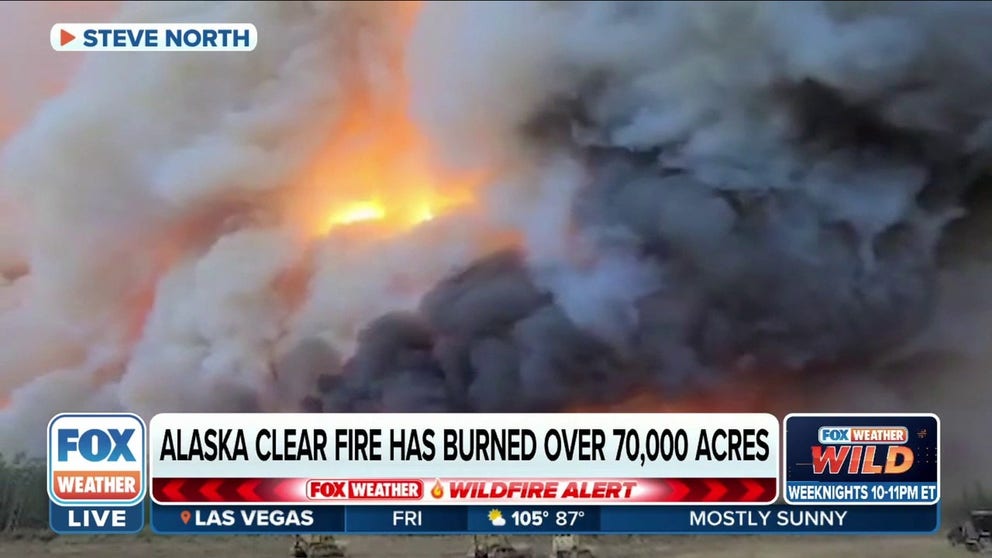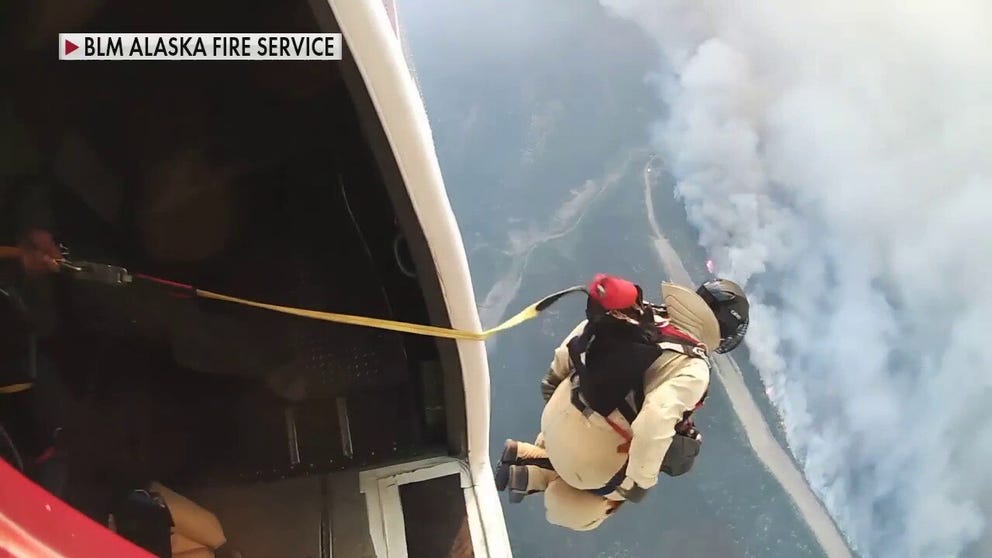Firestorm 2022: Alaska’s wildfires burn more than 3 million acres
More than 2 million acres have burned in the state
Alaska's Clear Fire burns more than 70,000 acres
Alaska’s Clear Fire burns more than 70,000 acres. Fire crews working on the blaze near Anderson, Alaska say rain has moderated the fire weather and allowed for progress.
FAIRBANKS, AK -- The combination of dry brush and lightning is keeping firefighters across Alaska busy monitoring hundreds of blazes that have consumed more than 2.5 million acres.
The busy fire season has set records and has already put the state well ahead of the number of acres that usually burn during an average year.
Forecasters say winter’s snowpack had little impact on the fire activity, and a drier than average spring and summer added to the prime fire-burning weather.
Days with thousands of lightning strikes have caused many fires to pop up and firefighters to devote resources to those that threaten infrastructure and property.
HOW TO WATCH FOX WEATHER ON TV
Due to the rural location of many of the fires and the sheer amount of blazes, officials say it is impossible to attack each one with the resources needed to contain the flames.
For this reason, fire managers assign different protection levels ranging from critical, where fires are aggressively fought, to a more limited response, where the fire is managed as a part of the natural ecosystem.
"People, the public and responder safety is number one. And managers way that with being able to manage these fires for resource benefit, but the priority will always be protecting people," Beth Ipsen, a public affairs specialist with the Alaska Fire Service, said.
Two of the larger fires, the East Fork and the Lime Complex, were responsible for torching more than a million acres.
Smoke produced by the large complex fires has hindered some firefighting responses.
Officials say visibility has occasionally grounded tanker aircraft, which are used to drop water and retardant to strengthen control lines.
Additionally, smoke jumpers cannot deploy when planes are grounded.
Drop into wildfires with Alaska's elite smokejumpers
Alaska has vast stretches of wild, open country and is often called the last frontier. So, what happens when wildfires break out? Sometimes the best way to attack the flames is for firefighters to parachute in.
These men and women are tasked with fighting fires in some of the most remote regions and jump out of planes to dig lines around the heart of a wildfire.
FIRES, HEAT AND EARTHQUAKES: ALASKA CURRENTLY THE EPICENTER OF EXTREME WEATHER
Despite reporting the second-worst June on record for acres burned, forecasters say there does appear to be some relief on the horizon.
The National Interagency Fire Center anticipates a reduction of fire potential in the late summer and fall across the state.
The expected rainfall and cooler weather will likely keep Alaska from surprising the 2004 fire season that was responsible for burning more than 6,600,000 acres, the worst in the state’s history.

